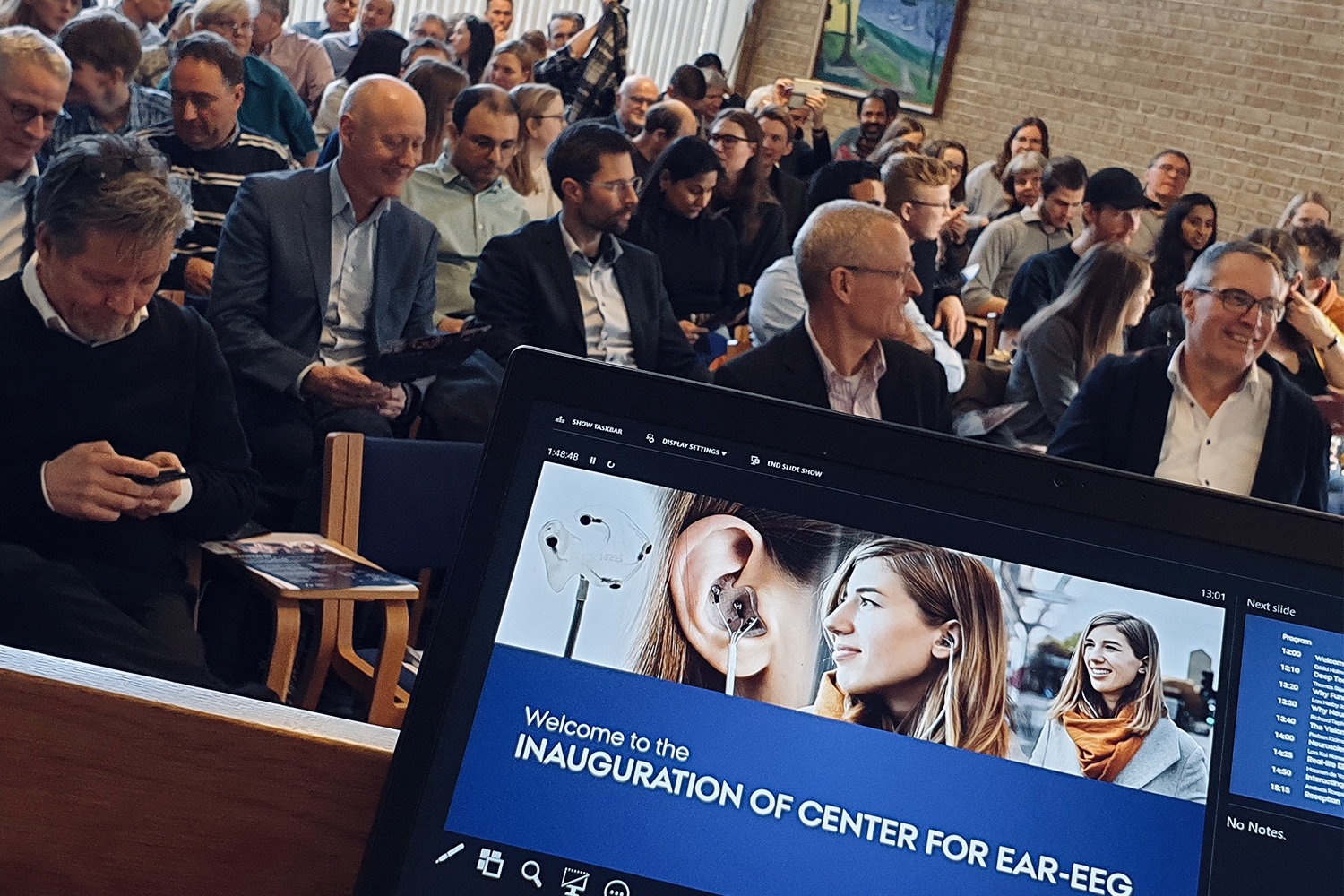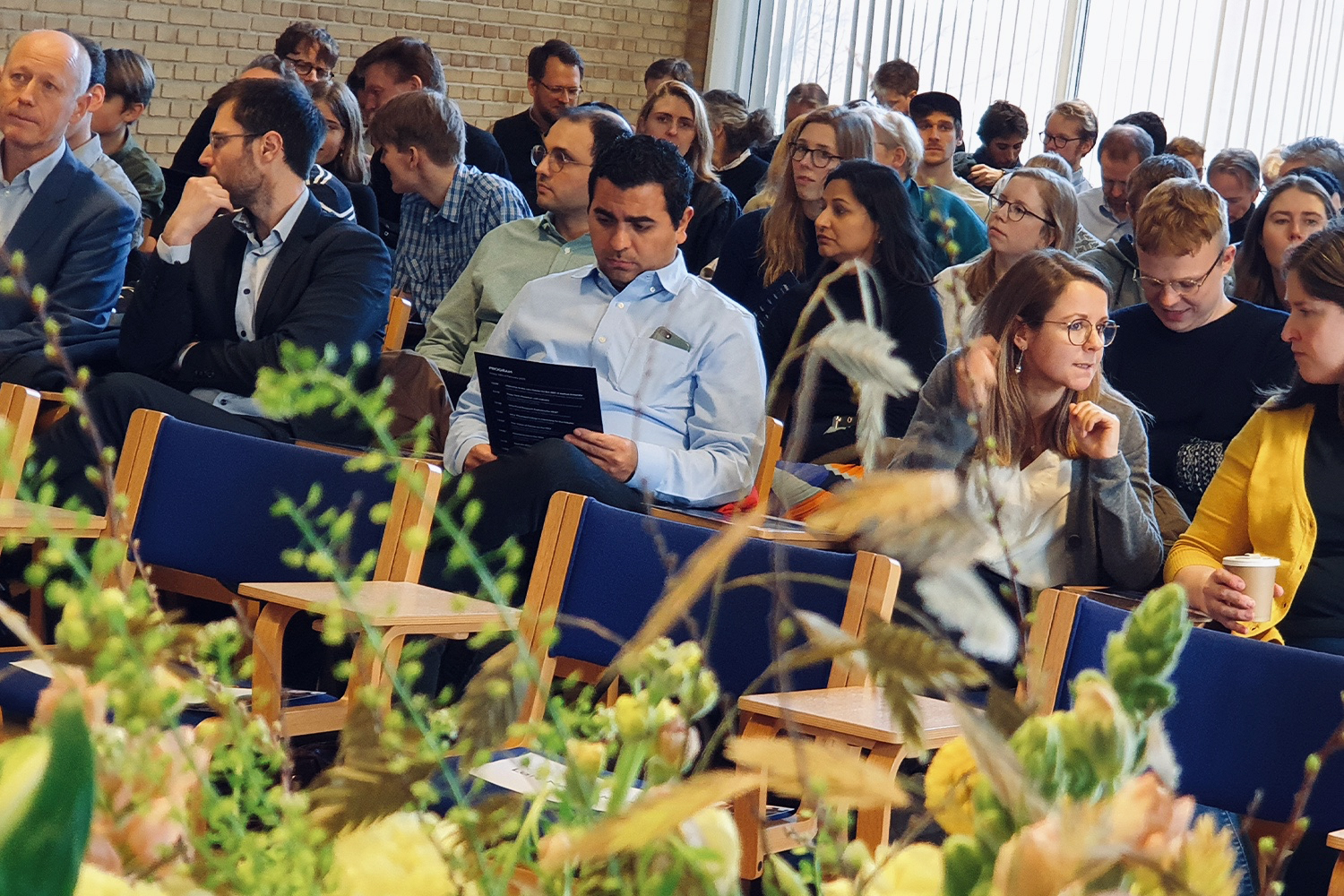Center for Ear-EEG officially opened
There was standing room only when the world's first centre for ear-EEG was inaugurated at the Department of Engineering, Aarhus University on Friday 28 February.


Ear-EEG is hardly the talk of the town just yet, but it will be if it is left up to Professor Preben Kidmose from the Department of Engineering at Aarhus University, who, on Friday 28 February, opened his new Center for Ear-EEG – the world's first, and so far the only, centre of its kind.
"I'm proud to open this, the first ear-EEG centre in the world. It’s an important step for us as a technical faculty, and a good example of how we’re at the forefront of research that can make a difference to society and solve real issues. This is what we want to be known for: innovation and entrepreneurship at its best," said the dean of the Faculty of Technical Sciences, Eskild Holm Nielsen at the opening ceremony.
The opening of the centre comes in the wake of a grant of DKK 20 million (EUR 2.6 mill.) from the families behind WS Audiology, UNEEG medical A/S, and the William Demant Foundation, which is behind the hearing-aid manufacturer, Oticon.
The aim is to further develop a very advanced method of measuring electrical activity in the brain via the ear, known as ear-EEG (ElectroEncephaloGraphy).
"There are great opportunities in this technology, and I'm very pleased with the support we’ve received to open the centre. I hope that we will be able to continue the good collaboration and even strengthen it in the future," said Professor Preben Kidmose, who is at the head of the research group Bioelectrical Instrumentation and Signal Processing, which is currently the world leader in the area.
The ear-EEG method measures extremely small voltage changes on the surface of the skin inside the ear caused by electrical activity in the brain's neurons. The protected, more discrete placement of the device itself makes the method more attractive than traditional EEG measurements, which use electrodes placed on top of the head.
“Many congratulations Preben. You've been a pioneer in the area for years, and that we can now open this centre at Aarhus University is well-deserved," said Thomas S. Toftegaard, who also stressed the importance of technology for the university's engineering initiative.
"There's a lot going on in the engineering area in Aarhus. We're developing an engineering setup that can compete with the best in Europe. And ear-EEG is one area where, in collaboration with the real world, we’re showing that we can take the lead."
One of the great advantages of ear-EEG is that the method makes it possible to measure brain activity discreetly and with minimal intrusion, and on large cohorts of people. This provides completely new possibilities to measure brain activity, and there is a hope that it can take us a step forward in understanding the human brain.
"Ear-EEG is a platform we’ve been seeking for a long time. Being able to measure electrical signals from the brain over an extended period of time opens up whole new frontiers – entirely new possibilities that were hitherto inconceivable," said Richard Tøpholm, CTO at UNEEG medical A/S at the opening.
He was backed up by Lars Nørby Hansen, chairman of the William Demant Foundation.
"I hope that this new centre can help mature the field of ear-EEG, secure long-term research activities, and attract students and young researchers to the area."
The opening of the centre is also very important for Aarhus University's digitisation strategy, with its focus on research into next-generation technology and methods to monitor and work with the human brain.
Contact
Jesper Bruun
Communications Partner
Mail: bruun@eng.au.dk
Tel.: +45 42404140
